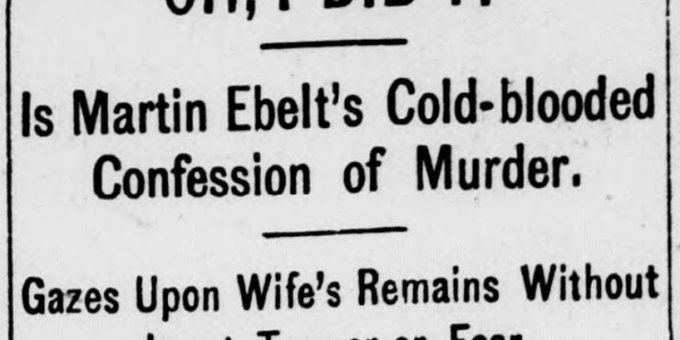
It was 1903 and a woman’s body had just been found inside a sewer pipe. While we will discover who did it and why, let’s take a look at one of the first reports on the case.
“The body of a woman about 26-years-old, and good looking, was found yesterday afternoon in a sewer pipe on the outskirts of Mount Vernon. The woman had a shoestring tied tightly around her neck, and there were finger marks on her throat which indicate that she was murdered.
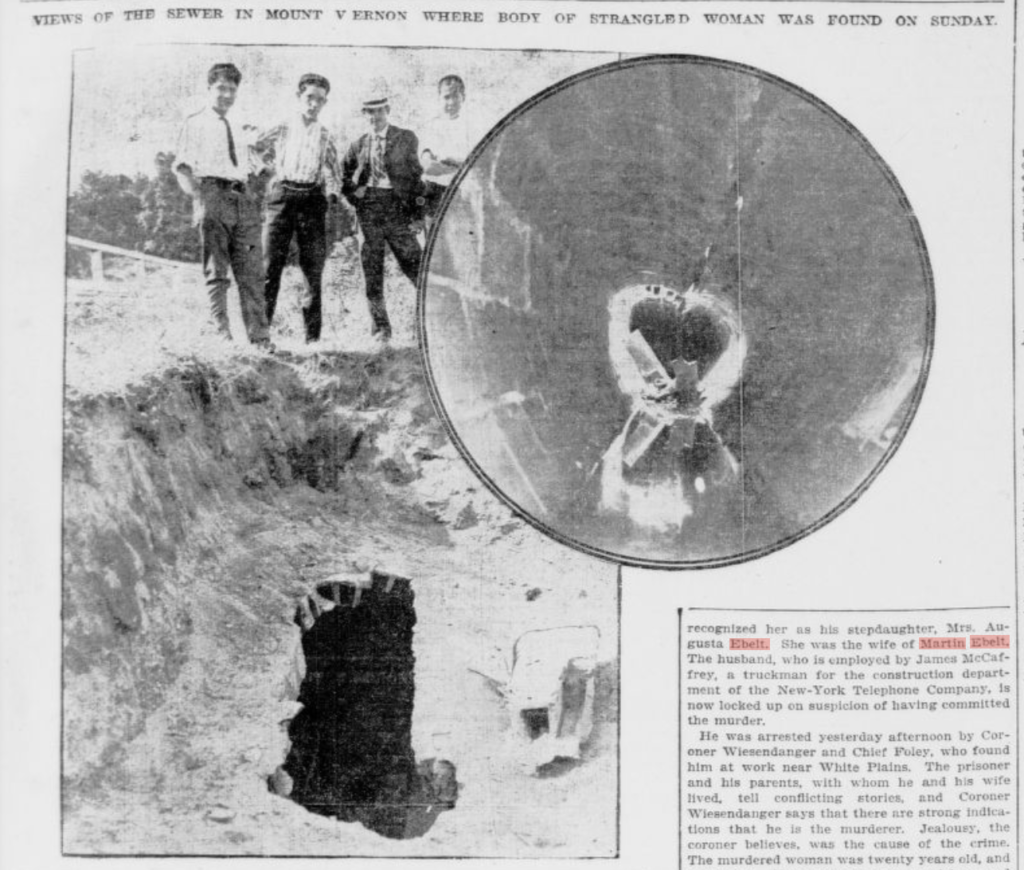
“The discovery of the body was made by two little girls who were out picking apples…
“The part of the city where the sewer is is known as East Mount Vernon. At the end of the street the sewer empties into the East Chester Creek. When the body was removed from the pipe it was discovered that a long black shoestring was tightly tied around the neck. It was an open knot. [The coroner] said that the strangler had used all his strength in tying it, for the string had cut deep into the flesh and had shut off the flow of blood…
“Who the woman is is a mystery. No one had ever seen her in the neighborhood.
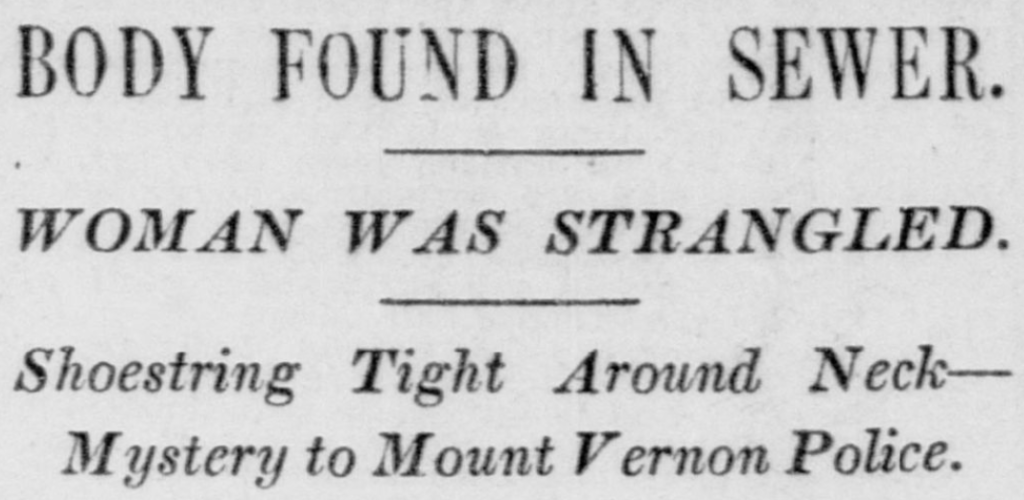
“[The two young girls] found the body at about 4 o’clock. They thought it was a bundle of clothing. Discovering what it really was they ran screaming from the scene… [and word was sent to the police].” [Source]
As the police investigated the scene, there were numerous theories about how she died and how she got into the sewer pipe. But most importantly, the police needed to identify the woman and so word was sent out to all the nearby police stations in the hope that someone may have reported her missing.
According to the coroner:
“Whoever tied the shoestring around her neck made one of the tightest and best open knots I have ever seen. The string cut almost an eighth of an inch into the flesh. Not satisfied with tying, the strangler also wound the cord around her neck three times and then covered up the cord with the neckband from her waist…”
It is obvious by this description that the killer was filled with rage and he wanted to make certain that this woman was dead.
Fortunately, it did not take long before the young woman was identified by her step-father as 19-year-old Augusta Ebelt, also known as Gussy.
The step-father immediately pointed his fingers at her husband who she previously had arrested for non-support. They lived with his mother and money seemed to be the main source of their problems. [Source]
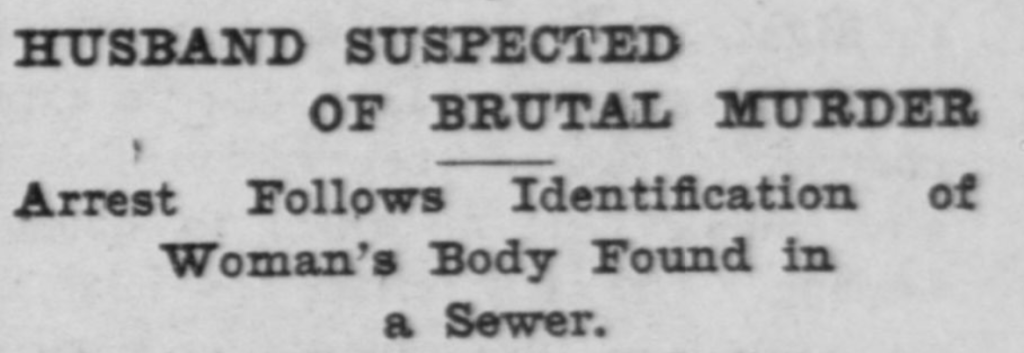
Then, one day, the husband, Martin Ebelt, stopped by the house after work and told his mother that he had a job lined up for Augusta. His mother was upset by the news, stating that she needed Augusta to help her with the all the work, but Augusta left with Martin to take on a new job.
That was the last time anyone, except Martin, saw her alive.
Martin was arrested and easily confessed to murdering his wife.
He said:
“On last Friday night when I went home from work I told my wife I had a position for her. She said all right, she would be glad to take it. I told her it was over at Wolf’s Lane, and after dinner she put on her hat and we went out together. We went down Franklin Avenue to Sixth Street and stopped there and sat down. At first we talked about the position and then I accused her of being too intimate with a Mr. Collins. During the argument her hat fell off and rolled down into the salt meadows. She denied that she had been out with Mr. Collins. I said that Collins had told me that she had been. Then she got mad and said I had no strings on her and she would go with whom she pleased. Then I caught her by the throat and I choked her with my thumbs. After I had choked her I wanted to be sure she was dead, so I took the shoestring from my pocket and tied it about her neck and then pulled it tight with both hands. Then I threw her down the sewer.
“I went back home and told my people that my wife had gone to work that night at a house in Wolf’s lane at $6 a week. My mother objected and said that Gussie had ought to stay home because she (my mother) would not be able to do all of the work.
“I did not care to tell her what I had done, so I put on my hat and went to see my sister… I didn’t hear anything about the crime until Chief Foley drove out to White Plains, where I was at work, yesterday afternoon and arrested me.” [Source]
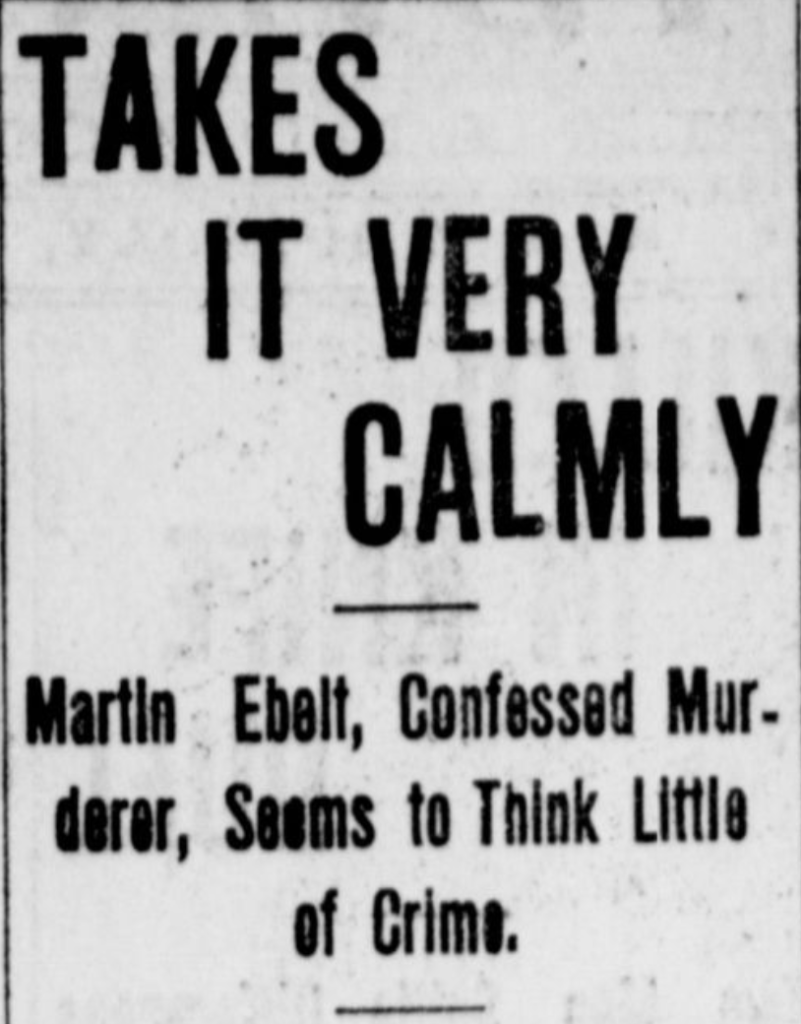
When asked where he had gotten the shoestring, Martin told the police he had taken it out of a drawer that morning. He also stated that two weeks previous to murdering Augusta he had checked out the old sewer and decided that it was “a good place to put her out of the way.” [Source]
His sister had also admitted that Martin often complained about his wife asking for money. He said that she was a continual annoyance to him.
And so Martin and his defense attempted to make up any excuse they could as to why Martin would brutally murder his wife. And if accusing her of being a nag and seeing another man wasn’t enough, they always had the insanity plea.

From the court records:
“The defense interposed was that of insanity, and evidence was given tending to show that at the time of his birth he received injuries to his head; that he was greatly troubled with headaches, and had had scarlet fever and malaria; that he was a great smoker of cigarettes; that they had a deleterious effect upon his mental capacity. And a physician, in answer to a hypothetical question based upon the testimony given in support of his defense, stated that he considered him to be a moral degenerate, suffering from moral insanity; that he did not possess sufficient intelligence to know right from wrong. On the other hand, it was shown from those for whom he had worked that he knew his business and worked well, and was an ordinarily intelligent man…” [Source]
In spite of the defense, Martin was sentenced to die in the electric chair in Sing Sing.
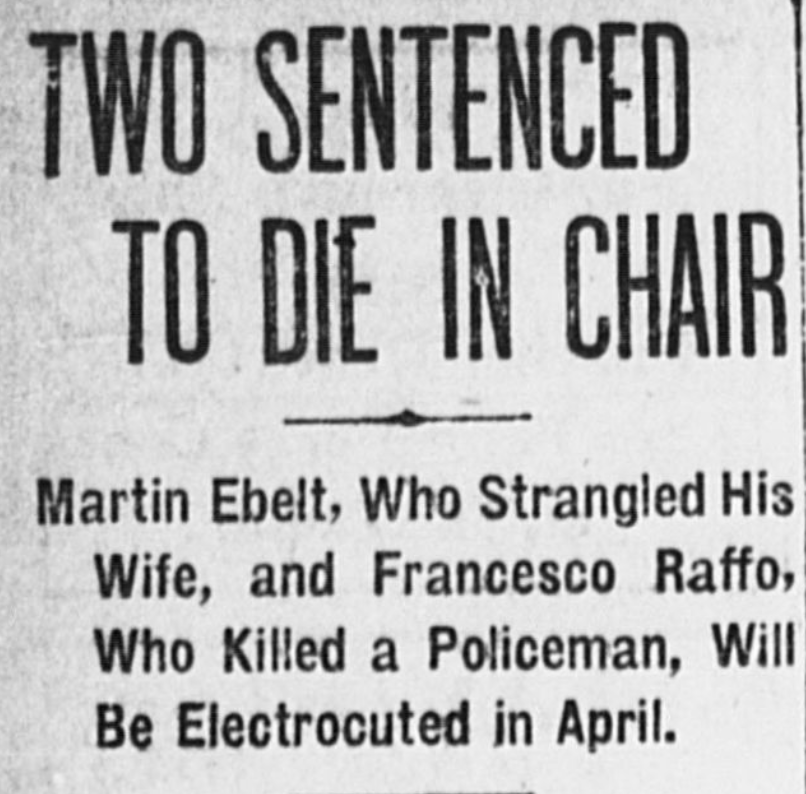
Interestingly enough, in 1905 it was reported that work had begun on the new death house at Sing Sing and that the then present death house would be torn down. Martin, it was reported, would be the last man to be put to death in the old chamber. [Source]

He was also, at that time, the youngest to be electrocuted at Sing Sing. He was 24-years-old. [Source]
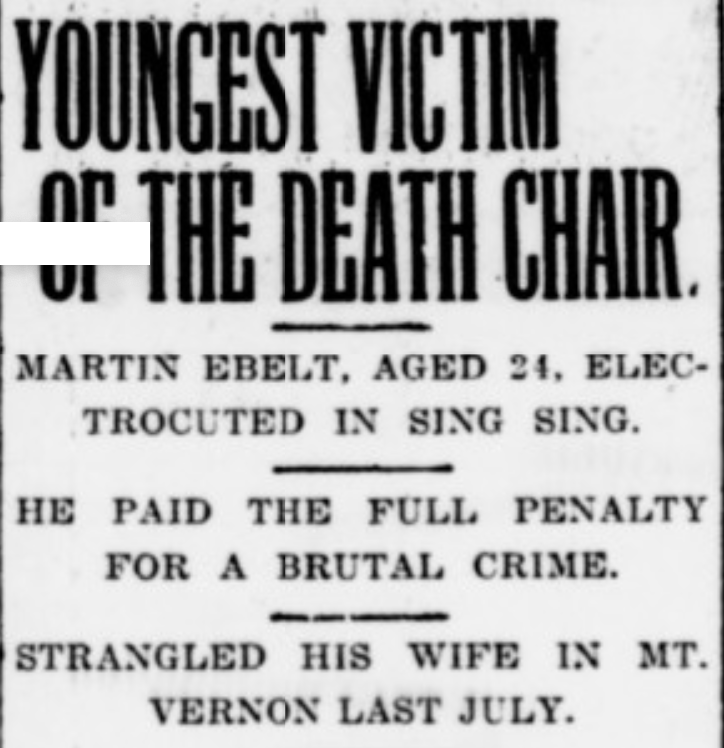
On April 10, 1905, it was reported that:
“The young man passed a very comfortable night, sleeping well, and awoke this morning in the best of spirits. Just as the sunlight of a perfect day was streaking through the windows of the prison. Warden Johnson and [the] Principal Keeper… approached Ebelt’s cell.
“’Is there many out there?’ Asked Ebelt, nodding toward the death house.
“‘Not many, less than a dozen,’ said Warden Johnson.
“‘Well, I don’t draw very well, do I?’ Was the condemned man’s last gruesome joke, as the death march was started with the Rev. Father Mahoney… and the Rev. Father Martin, his spiritual advisers, on either side.
“It was just about 5:50 that Ebelt passed through the small stone arched doorway from the murderers’ row to the death house. As his eyes fell on the electric chair all traces of a smile faded instantly and his face blanched. He faltered a moment, but the firm touch of Father Mahoney brought back his courage.
“Within 55 minutes after entering the chamber Ebelt was strapped in. ‘All right,’ said Warden Johnson.

“There was a quick straining of the straps as [the State Electrician] threw over the switch that shot a current of 1,840 volts through the body. The current was kept on for seven seconds, reduced to 250 volts, put back to full force after nearly a minute more, and then turned off.
“The physicians’ examination showed that Ebelt was dead after the first shock, but according to custom a second shock of full strength was given…
“Ebelt made no farewell statement or left a letter of any kind expressing regret for his crime. He received his last visit yesterday from his brother and sister. His father and mother… did not come. The body was claimed by the relatives.” [Source]

